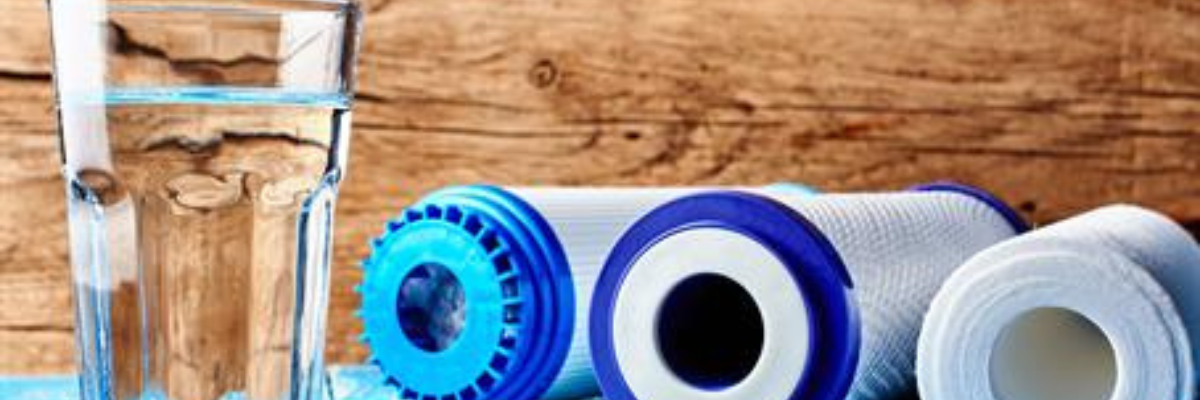Water pre-filtration refers to the initial process of removing larger particles, sediments, and debris from water before it undergoes more specialized filtration or treatment. This first stage is crucial in ensuring that downstream filtration systems (such as reverse osmosis, UV sterilizers, or softeners) operate efficiently and last longer. Several water pre-filtration methods are available, each with its specific advantages. Here’s an overview of common pre-filtration methods and their benefits:
1. Sediment Filters
How It Works:
- Sediment filters are designed to remove physical particles like dirt, sand, rust, silt, and other large debris from water. These filters are often made of pleated polyester, polypropylene, or string-wound materials.
Types:
- Pleated Filters: Made of a pleated material to increase surface area.
- String-Wound Filters: Made of string wound around a central core for depth filtration.
- Spun Filters: Created from spun polypropylene, offering excellent dirt-holding capacity.
Advantages:
- Protects Other Filtration Systems: Sediment filters prevent larger particles from clogging more sensitive filtration systems like carbon or reverse osmosis (RO) membranes.
- Cost-Effective: They are inexpensive and easy to replace, making them a simple but effective solution for water pre-filtration.
- Versatile: Sediment filters are commonly used in household water systems, industrial applications, and municipal water supplies.
- Variety of Micron Ratings: Available in various micron sizes (e.g., 5 microns, 10 microns), allowing users to select the appropriate filter size based on their specific water quality needs.
2. Activated Carbon Pre-Filters
How It Works:
- Activated carbon pre-filters use carbon’s porous structure to trap organic contaminants, chemicals, and chlorine, while also removing odors and improving water taste. It is typically used after sediment filters to remove finer particles and chemicals.
Advantages:
- Removes Chlorine and VOCs: Highly effective in removing chlorine, volatile organic compounds (VOCs), and other chemicals that can affect the taste and smell of water.
- Improves Taste and Odor: By removing chlorine and organic compounds, carbon filters significantly improve the taste and smell of water.
- Protects RO Systems: Carbon pre-filters are often used before reverse osmosis systems to prevent chlorine from damaging the RO membrane.
- Environmentally Friendly: Activated carbon is a natural and renewable filtration medium.
3. Spin-Down Filters
How It Works:
- Spin-down filters use centrifugal force to separate larger particles from water. As water enters the filter, it spins, forcing sediment to settle at the bottom of the filter. These filters typically feature a mesh screen to trap debris.
Advantages:
- Reusable: The sediment collected in spin-down filters can be flushed out, making them reusable and low-maintenance.
- Ideal for High Sediment Loads: Particularly useful for applications where the water has high sediment loads, such as well water systems or areas with heavy sand or dirt in the water supply.
- Long-Lasting: Since they can be flushed and reused, spin-down filters tend to have a long lifespan and require minimal maintenance.
- No Replacement Costs: Since they don’t require disposable cartridges, spin-down filters have low operational costs.
4. Screen Filters
How It Works:
- These filters use a fine mesh screen to trap particles and debris. As water passes through the mesh, large particles are left behind, and cleaner water moves through the system.
Advantages:
- Simple and Effective: Screen filters are straightforward in design and work well for trapping large debris in water.
- Reusable: Similar to spin-down filters, many screen filters are designed to be cleaned and reused rather than replaced.
- Variety of Mesh Sizes: Available in different mesh sizes to filter out particles of different sizes, depending on the water quality.
- Low Maintenance: They are easy to maintain, as you can remove the screen, clean it, and put it back in.
5. Sand Filtration
How It Works:
- Sand filters use layers of sand or other media (such as gravel or anthracite) to trap particles. Water passes through these layers, and the sand traps dirt, debris, and even some organic matter.
Advantages:
- Effective for Larger Volumes: Sand filtration is suitable for high-flow rates, making it ideal for industrial, agricultural, and municipal applications.
- Natural Filtration: Sand is a natural filtration medium, and it effectively removes large debris, silt, and other suspended solids from water.
- Cost-Effective: Sand filters are relatively inexpensive to install and maintain.
- Long Lifespan: Sand filters can last for many years with regular backwashing and maintenance, making them a durable option for large-scale applications.
6. Cartridge Filters
How It Works:
- Cartridge filters are cylindrical filters that trap particles as water flows through them. The cartridges can be made from various materials like polyester, polypropylene, or cellulose, and they can be replaced as they become clogged.
Advantages:
- High Filtration Efficiency: Cartridge filters provide finer filtration and are available in different micron ratings, allowing for better removal of smaller particles.
- Easy to Replace: Cartridge filters are easy to replace when they become full, making them a convenient option for homes and small businesses.
- Compact Design: Cartridge filters are compact, making them suitable for point-of-use installations.
- Versatile Applications: These filters can be used in various applications, from household water systems to industrial processes.
7. Multimedia Filters
How It Works:
- Multimedia filters use multiple layers of media (such as sand, gravel, anthracite, or activated carbon) to filter water. Each layer targets different types and sizes of contaminants, providing more thorough filtration.
Advantages:
- Comprehensive Filtration: By using multiple filtration layers, multimedia filters can remove a wide range of contaminants, from large particles to finer sediments.
- Longer Lifespan: Since different media layers are used, they can filter water more efficiently and require less frequent maintenance or backwashing.
- Improved Flow Rates: Multimedia filters are designed to handle higher flow rates than single-media filters, making them suitable for larger-scale water treatment systems.
- High Dirt-Holding Capacity: The combination of different media allows for a high dirt-holding capacity, reducing the frequency of filter cleaning or replacement.
8. Ultrafiltration (UF)
How It Works:
- Ultrafiltration uses a membrane with very small pores (about 0.01 to 0.1 microns) to remove suspended solids, bacteria, and some viruses. Water is pushed through the membrane, and contaminants are filtered out based on size.
Advantages:
- Removes Bacteria and Microorganisms: UF can remove bacteria, protozoa, and even some viruses, making it an excellent option for treating water from sources that may be contaminated with biological impurities.
- Chemical-Free: Ultrafiltration does not require the use of chemicals, making it a greener option for water filtration.
- Improves Water Clarity: It removes turbidity (cloudiness) and fine sediments, producing clearer water.
- Low Maintenance: The membranes are durable and can be cleaned through backwashing, reducing the need for frequent replacement.
Conclusion
Water pre-filtration plays a crucial role in ensuring clean, safe water and protecting downstream treatment systems. Each pre-filtration method has its advantages, depending on the type of water and the specific contaminants present. Here’s a quick summary of the benefits:
- Sediment Filters: Ideal for protecting finer filtration systems; low-cost.
- Activated Carbon Pre-Filters: Excellent for removing chlorine, odors, and VOCs.
- Spin-Down Filters: Reusable and great for handling high sediment loads.
- Screen Filters: Simple, effective, and easy to maintain.
- Sand Filtration: Suitable for large volumes and natural filtration.
- Cartridge Filters: High efficiency and easy to replace.
- Multimedia Filters: Comprehensive, high-capacity filtration for diverse applications.
- Ultrafiltration: Advanced filtration for bacteria and fine particles.
Selecting the right pre-filtration system depends on your specific water quality issues and the desired level of treatment.


Recent Comments